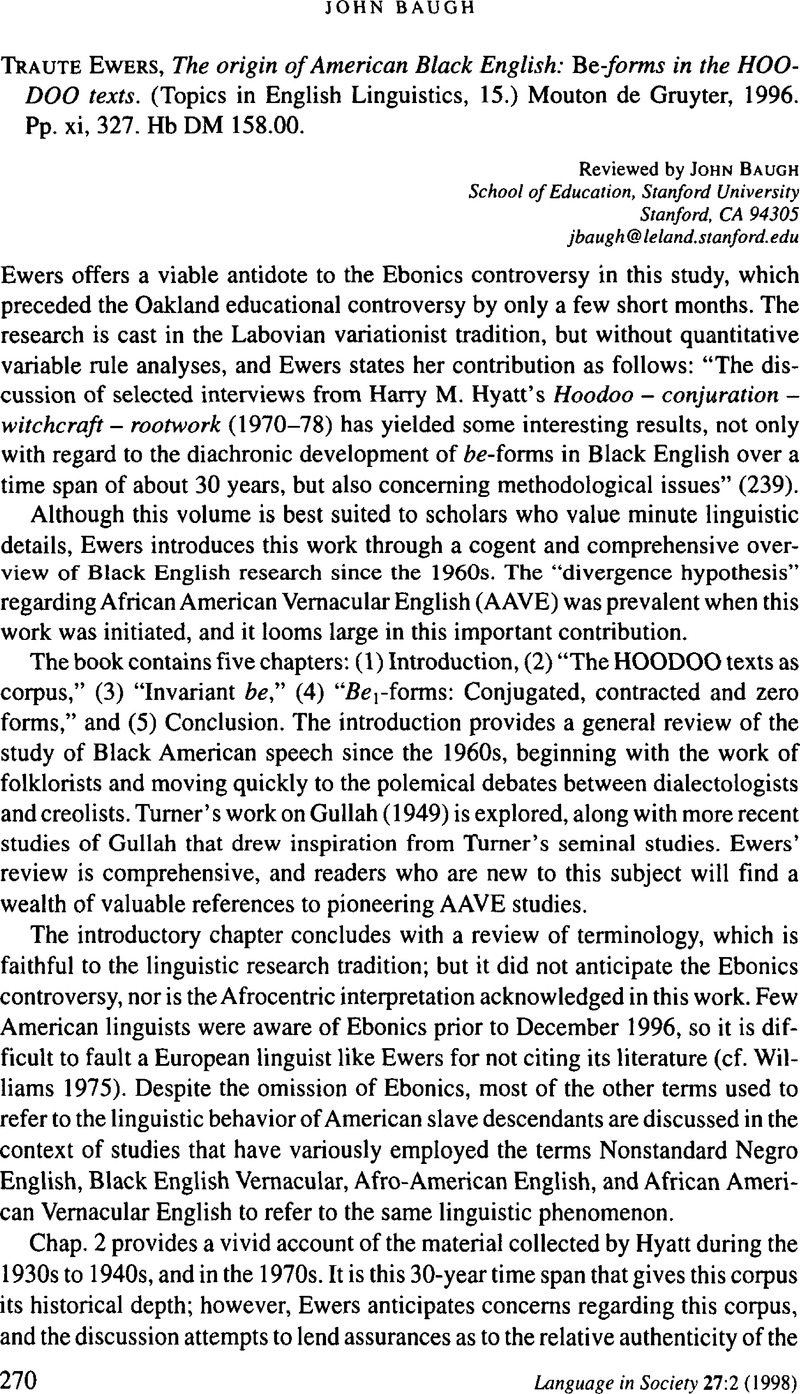No CrossRef data available.
Article contents
Traute Ewers, The origin of American Black English: Be-forms in the HOODOO texts. (Topics in English Linguistics, 15.) Mounton de Gruyter, 1996. Pp. xi, 327. Hb DM 158.00.
Published online by Cambridge University Press: 26 July 2012
Abstract
An abstract is not available for this content so a preview has been provided. Please use the Get access link above for information on how to access this content.

- Type
- Reviews
- Information
- Copyright
- Copyright © Cambridge University Press 1998
References
REFERENCES
DeBose, Charles (1982). Samana English: A dialect that time forgot. Berkeley Linguistic Society 9:47–53.Google Scholar
Hyatt, Harry M. (1970–1978). Hoodoo-conjuration-witchcraft-rootwork: Beliefs accepted among many Negroes and White Persons. 5 vols. Hannibal, MO: Western.Google Scholar
Poplack, Shana, & Sankoff, David (1987). The Philadelphia story in the Spanish Caribbean. American Speech 62:291–314.CrossRefGoogle Scholar
Rickford, John (1986). Social contact and linguistic diffusion: Hiberno-English and New World Black English. Language 62: 245–89.Google Scholar
Rickford, John et al. (1991). Rappin on the copula coffin: Theoretical and methodological issues in the analysis of copula variation in African-American vernacular English. Language Variation and Change 3:103–32.CrossRefGoogle Scholar
Turner, Lorenzo D. (1949). Africanisms in the Gullah dialect. Chicago: University of Chicago Press.Google Scholar
Williams, Robert L. (1975). Ebonics: The true language of Blackfolks. St.Louis: Robert L. Williams.Google Scholar




